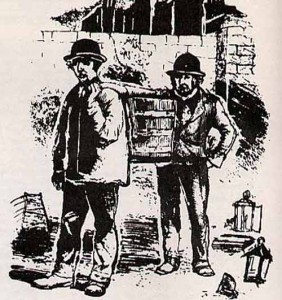While some city residents have become farmers either by design or default depending on the residential area one resides in, cheap is proving to be life threatening as farmers are now using raw sewage for farming. This means much of the vegetables especially sukuma wiki (kales) on sale in Nairobi are highly contaminated and pose a serious health risk to consumers.
 A visit to the sewage collection point in Njiru, Nairobi by Linda Shiundu of TUKO.co.ke revealed the effluence deposited there is always tapped and used for farming by farmers living. The farmers who wished to remain anonymous said instead of waiting for the rains, they would rather take advantage of the 75,000 liters of untreated sewage disposed daily to water their crops. They do so by digging trenches from the deposit site channeling the semi solid human waste into their farms which they use to water the crops and as manure. They mainly grow vegetables like sukuma wiki, spinach and other crops like bananas. Sewage deposited at the sewage collection point around Njiru area is always trapped by farmers living around the collection center and use for planting. The vegetables later on find their way into the market and in to the plates and stomachs of many unsuspecting residents. The vegetables later on find their way into the market.
A visit to the sewage collection point in Njiru, Nairobi by Linda Shiundu of TUKO.co.ke revealed the effluence deposited there is always tapped and used for farming by farmers living. The farmers who wished to remain anonymous said instead of waiting for the rains, they would rather take advantage of the 75,000 liters of untreated sewage disposed daily to water their crops. They do so by digging trenches from the deposit site channeling the semi solid human waste into their farms which they use to water the crops and as manure. They mainly grow vegetables like sukuma wiki, spinach and other crops like bananas. Sewage deposited at the sewage collection point around Njiru area is always trapped by farmers living around the collection center and use for planting. The vegetables later on find their way into the market and in to the plates and stomachs of many unsuspecting residents. The vegetables later on find their way into the market.
Despite the health risks posed by the exposed raw sewage including, diarrhea, abdominal pain, vomiting and even death, open food kiosks are also run next to the disposal site. The kiosks are normally flooded with drivers who bring in the hundreds of lorries daily to deposit the sewage.




.jpg) 80% of the confirmed cases were in females and 45% were in people aged between 15-24 years (range 7 to 53).
80% of the confirmed cases were in females and 45% were in people aged between 15-24 years (range 7 to 53). were in, and each one seemed to have a decent-sized garden. He said those gardens supply a lot of the produce to the high-end restaurants in the city. And they all use night soil.
were in, and each one seemed to have a decent-sized garden. He said those gardens supply a lot of the produce to the high-end restaurants in the city. And they all use night soil.